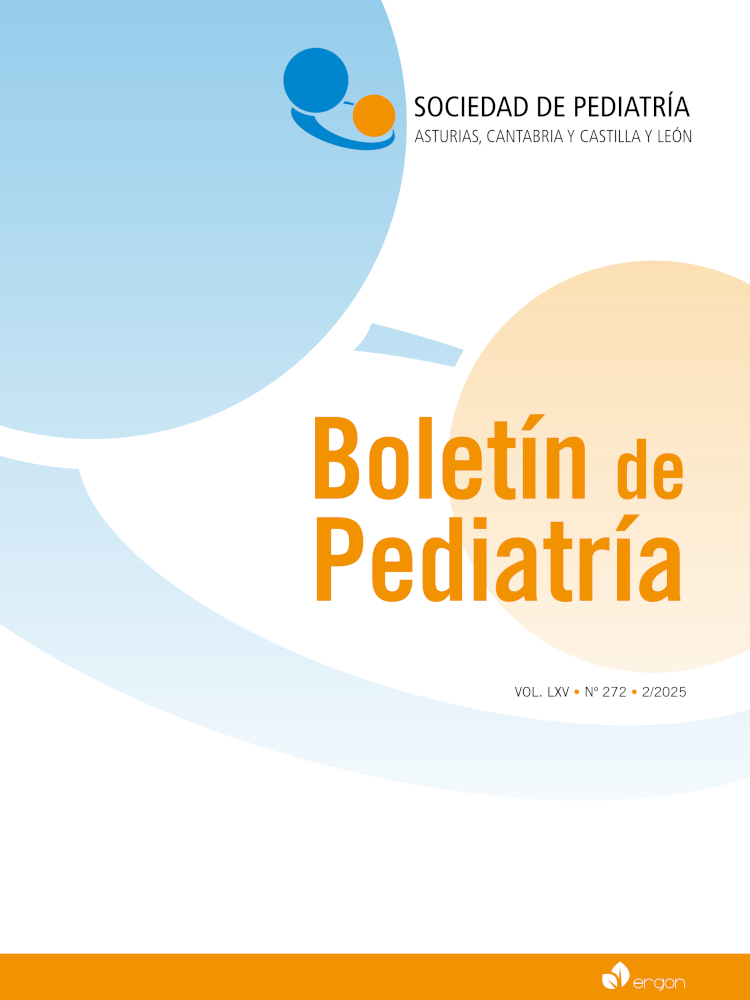Abstract
Long QT syndrome (LQTS) is a hereditary channelopathy that predisposes individuals to the development of ventricular arrhythmias. Up to 16 genes have been described as involved in the development of LQTS, resulting in a wide clinical spectrum that complicates its therapeutic management. This study examines a population of Asturias children diagnosed with LQTS to describe their characteristics, associated genetic and phenotypic spectra, and treatment. A total of 27 cases of LQTS were identified in Health Area IV, the affected population was predominantly male of gypsy ethnicity and identified through other affected family members. The main genetic spectra identified were LQT1-KCNQ1, LQT2-KCNH2, and LQT3-SCN5AC, with the first two being at higher risk. The most prevalent spectrum was LQT2-KCNH2 due to the well-conserved mutation p.Gly262AlasTer98 in gypsy population, which is reported here for the first time in this population. The treatment for these patients included B-blocker, primarily bisoprolol and propranolol.
This study highlights the genetic and phenotypic diversity of LQTS in Asturias, emphasizing the need for appropriate surveillance and treatment to prevent lethal events in these patients.
References
Sarquella-Brugada G, Campuzano O, Brugada R. Trastornos del ritmo cardíaco más frecuentes en pediatría: síndrome de QT largo. Pediatr Integral. 2012; XVI(8): 617-21.
Baltogiannis G, Conte G, Sieira J, De Ferrari GM, Brugada P. Sudden cardiac death and channelopathies. Front Cardiovasc Med. 2020; 7: 605834. https://doi.org/10.3389/fcvm.2020.605834
Schwartz PJ, Stramba-Badiale M, Crotti L, Pedrazzini M, Besana A, Bosi G, et al. Prevalence of the congenital long-QT syndrome. Circulation. 2009; 120(18): 1761-7. https://doi.org/10.1161/CIRCULATIONAHA.109.863209
Wilde AAM, Amin AS, Postema PG. Diagnosis, management and therapeutic strategies for congenital long QT syndrome. Heart. 2022; 108(5): 332. https://doi.org/10.1136/heartjnl-2020-318259
Bazett HC. An analysis of time relations of electrocardiograms. Heart. 1920; 353-70.
Schwartz PJ, Crotti L, Insolia R. Long QT syndrome: From genetics to management. Circ Arrhythm Electrophysiol. 2012; 5(4): 868. https://doi.org/10.1161/CIRCEP.111.962019
Priori SG, Schwartz PJ, Napolitano C, Bloise R, Ronchetti E, Grillo M, et al. Risk stratification in the long-QT syndrome. N Engl J Med. 2003; 348(19): 1866-74. https://doi.org/10.1056/NEJMoa022147
Goldenberg I, Moss AJ, Peterson DR, McNitt S, Zareba W, Andrews ML, et al. Risk factors for aborted cardiac arrest and sudden cardiac death in children with the congenital long-QT syndrome. Circulation. 2008; 117(17): 2184-91. https://doi.org/10.1161/CIRCULATIONAHA.107.701243
Schwartz PJ, Moss AJ, Vincent GM, Crampton RS. Diagnostic criteria for the long QT syndrome: An update. Circulation. 1993; 88(2): 782-4.
https://doi.org/10.1161/01.CIR.88.2.782
Schwartz PJ, Spazzolini C, Crotti L, Bathen J, Amlie JP, Timothy K, et al. The Jervell and Lange-Nielsen syndrome: Natural history, molecular basis, and clinical outcome. Circulation. 2006; 113(6): 783-90. https://doi.org/10.1161/CIRCULATIONAHA.105.592899
Schwartz PJ, Lia C. QTc behavior during exercise and genetic testing for the long-QT syndrome. Circulation 2011; 124: 2181- 4. https://doi.org/10.1161/CIRCULATIONAHA.111.062182
Kwok SY, Liu APY, Chan CYY, Lun KS, Fung JLF, Mak CCY, et al. Clinical and genetic profile of congenital long qt syndrome in hong kong: A 20-year experience in paediatrics. Hong Kong Medical Journal. 2018; 24(6): 561-70. https://doi.org/10.12809/hkmj187487
Zullo A, Frisso G, Detta N, Sarubbi B, Romeo E, Cordella A, et al. Allelic complexity in long QT syndrome: A family-case study. Int J Mol Sci. 2017; 18(8): 1633. https://doi.org/10.3390/ijms18081633
Lahrouchi N, Tadros R, Crotti L, Mizusawa Y, Postema PG, Beekman L, et al. Transethnic genome-wide association study provides insights in the genetic architecture and heritability of long QT syndrome. Circulation. 2020; 142(4): 324. https://doi.org/10.1161/CIRCULATIONAHA.120.045956
Adler A, Novelli V, Amin AS, Abiusi E, Care M, Nannenberg EA, et al. An International, multicentered, evidence-based reapprai- sal of genes reported to cause congenital long QT syndrome. Circulation. 2020; 141(6): 418. https://doi.org/10.1161/CIRCULATIONAHA.119.043132
Zeppenfeld K, Tfelt-Hansen J, De Riva M, Winkel BG, Behr ER, Blom NA, et al. 2022 ESC Guidelines for the management of patients with ventricular arrhythmias and the prevention of sudden cardiac death. Eur Heart J. 2022; 43(40): 3997. https://doi.org/10.1093/eurheartj/ehac262
Mazzanti A, Trancuccio A, Kukavica D, Pagan E, Wang M, Mohsin M, et al. Independent validation and clinical implications of the risk prediction model for long QT syndrome (1-2-3-LQTS- Risk). Europace. 2021; 24: 697-8. https://doi.org/10.1093/europace/euac012
Costa S, Saguner AM, Gasperetti A, Akdis D, Brunckhorst C, Duru F. The link between sex hormones and susceptibility to cardiac arrhythmias: From molecular basis to clinical implica- tions. Front Cardiovasc Med. 2021; 8: 644279. https://doi.org/10.3389/fcvm.2021.644279
Sistema de Información en Enfermedades Raras de Asturias. Dirección General de Salud Pública. Enfermedades raras en Asturias, 1996-2012 [Internet]. [citado 30 Abr 2024]. Disponible en: www.astursalud.es
Priori SG, Napolitano C, Schwartz PJ. Low penetrance in the long-QT syndrome clinical impact. Circulation. 1999; 99(4): 529-33. https://doi.org/10.1161/01.CIR.99.4.529
Modell SM, Bradley DJ, Lehmann MH. Genetic testing for long QT syndrome and the category of cardiac ion channelopathies. PLoS Curr. 2012; 4: e4f9995f69e6c7. https://doi.org/10.1371/4f9995f69e6c7
Ono M, Burgess DE, Schroder EA, Elayi CS, Anderson CL, January CT, et al. Long QT syndrome type 2: Emerging strategies for correcting class 2 KCNH2 (HERG) mutations and identifying new patients. Biomolecules. 2020; 10(8): 1144. https://doi.org/10.3390/biom10081144
Vincent GM, Schwartz PJ, Denjoy I, Swan H, Bithell C, Spazzolini C, et al. High efficacy of β-blockers in long-QT syndrome type 1: Contribution of noncompliance and QT-prolonging drugs to the occurrence of β-blocker treatment 'failures'. Circulation. 2009; 119(2): 215-21. https://doi.org/10.1161/CIRCULATIONAHA.108.772533
Priori SG, Napolitano C, Schwartz PJ, Grillo M, Bloise R, Ronchetti E, et al. Association of long QT syndrome loci and cardiac events among patients treated with beta-blockers. JAMA. 2004; 292(11): 1341-4. https://doi.org/10.1001/jama.292.11.1341
Lorca R, Junco-Vicente A, Pérez-Pérez A, Pascual I, Persia-Paulino YR, González-Urbistondo F, et al. KCNH2 p.Gly262AlafsTer98: A new threatening variant associated with long QT syndrome in a Spanish cohort. Life (Basel). 2022; 12(4): 556. https://doi.org/10.3390/life12040556
Cheng H, Charles I, James AF, Abdala AP, Hancox JC. Delayed ventricular repolarization and sodium channel current modification in a mouse model of Rett syndrome. Int J Mol Sci. 2022; 23(10): 5735. https://doi.org/10.3390/ijms23105735

This work is licensed under a Creative Commons Attribution-NonCommercial 4.0 International License.
Copyright (c) 2025 Boletín de Pediatría
